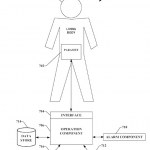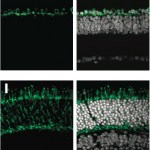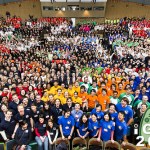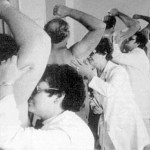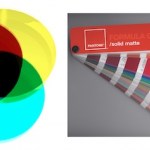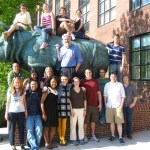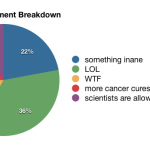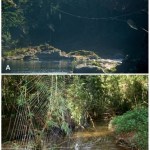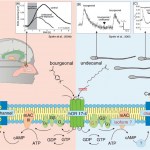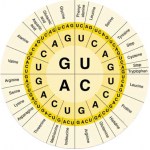
All the science blogs are talking about it. Where are all the female science bloggers? The question itself and the long lists of great bloggers who happen to be female bring up a lot of interesting questions about what makes a good blog, what is best for blog (self-)promotion, who is in what science blogging clique, what it means to write about "women's issues," and what it means to be a woman in science. But what these lists (and the blogs that they're on) highlight even more is just how homogeneous the community can be: Where are the non-white science bloggers? Where are the LGBTIQ science…
I've been playing a bit with the alpha of Qwiki, a new website that offers users an innovative "information experience." The site collects images, videos, and text about topics from the internet and then displays the images future-aesthetically while reading the information in a delightful robot voice. There are still some kinks to work out, but overall it's kind of cute and fun! Here is Qwiki Science:
And Qwiki Science Heroes--Carl Sagan:
Just like on wikipedia, it's easy to fall into a procrastination spiral clicking on related links, but it's worth signing up and poking around!
Industrial food production separates us from our food, increasing the distance from living thing to food product. As factories continue to import corn and export almost everything we eat, writers like Michael Pollan urge us to eat "real" food, and projects like the Slow Food movement have gained over 100,000 members who strive to preserve traditional and regional ways of growing and cooking food. At the same time, a growing number of young contemporary artists also explore the distance between us and what we eat by bringing secretions of the human body into food production.
Human secretions…
What do you get when you combine two of my favorite things, synthetic biology and documentary film? We may never know if Sam and George don't get the funding they need on Kickstarter!
I don't usually do this kind of thing, but I met these guys while they were filming in Boston and their movie promises to be really good and really interesting and really educational (and I might even be in it!). You can check out some of their videos from the road on their vimeo page, including this one from the University of Wisconsin iGEM team:
My friend Patrick is embarking on a 48 experiment, studying circadian rhythm and destroying his own in the process. He's also embarking on a social media experiment, live-streaming the whole thing on ustream.
Tune in to watch real science in action and the effects of sleep deprivation on scientists! You can even ask him questions during the three hours between experimental time points!
Yesterday I mentioned Symbiotic Households, an art project imagining genetically engineered mosquitoes that provide mood stabilizing compounds to a population plagued by worries caused by climate change. Today on twitter I saw a link to a US patent application filed by Microsoft about engineering parasites to monitor and maintain human health. The possible engineered parasites covered in the application include:
mosquitoes, fleas, ticks, bed bugs (Cimicidae Cimex lectularius), midges (such as Ceratopogonidae), other blood sucking arthropods, annelids or leeches, nematodes such as Ascaris…
With The Symbiotic Household, Elliott P. Montgomery seeks to find answers to problems caused by climate change. Low-cost, low energy solutions are proposed through complex genetic engineering of domesticated insects--"What better way to deal with a future need than with a future technology?"
The project is deliberatively provocative; "By offering a problematic answer, I want to encourage viewers to question the entire scenario and thereby take part in the discussion." What do you think?
via we make money not art
Evolution connects all living things on earth, from the arsenic tolerant bacteria in the news this week to the human scientists and bloggers chatting about it. Eyes are intricately complex structures made up of many many cells, but even single-celled microbes can sense and respond to light through the function of proteins that share evolutionary similarity with the light receptors of the human retina. Incredibly, genetic engineering is showing us just how similar these proteins can be--transferring the genes that code for these processes leads to functional proteins, even when huge…
An incredible (if unscientific) look at the history of life:
The video has been around for a few months and has a gajillion hits so sorry if I'm late to the party, I just had to share!
By Blu, via Bio Fiction
It's been a few weeks since the iGEM jamboree, a whirlwind, completely exhausting weekend of student synthetic biology projects. This tweet from Robin Sloan from the #igem2010 stream is a pretty good way to sum up the weekend:
.bbpBox987719207489536 {background:url(http://a3.twimg.com/profile_background_images/3386569/giant2.jpg) #777f88;padding:20px;} p.bbpTweet{background:#fff;padding:10px 12px 10px 12px;margin:0;min-height:48px;color:#000;font-size:18px !important;line-height:22px;-moz-border-radius:5px;-webkit-border-radius:5px} p.bbpTweet span.metadata{display:block;width:100%;clear:…
Everything has a unique chemical signature. Every body, every place. When you smell home you're sensing all the chemical traces that make up the place you grew up. When you smell your mate, you're smelling the unique combination of their body and the microbiome of their skin.
The unique smell of a city is something that my Synthetic Aesthetics partner, Sissel Tolaas, has been interested in for a long time. Yesterday in her lab I got to smell her recreations of the smells of Paris--the corner bakery, dog poop on the sidewalk, old rusty cars, cigarettes and perfume, sun on the street after…
Nick pointed me to a fabulous podcast series by CBC radio called "How To Think About Science." Each episode is a long and fascinating interview with a prominent scholar of science--scientists, philosophers, sociologists, anthropologists, and historians who explore how science is done, how scientists work, and how scientific ideas and facts are communicated. Check it out!
We can babble philosophically about whether or not what we call "red" looks the same from another person's eyes, we can compare the adjectives we use to specify colors--is it maraschino red or cayenne?--but when we're talking to our computers, categorizing flowers, designing objects for mass production, branding a company, or establishing a flag's official colors we have to be able to be specific about which exact shade of red we want.
These days we have standard color systems that define colors as specified mixes of red, green, and blue pixels on screen, specific mixtures of pigments in…
Mammalian cells need something to hold on to before they can stick to each other and form tissues. The plastic dishes that cells grow on in the lab need to be first coated with special chemicals that grab the cells and convince them to stick. Once the first batch of cells is down they start forming their own matrix of proteins and fibers that can grab new cells as they are formed, slowly creating a dense layer of cells. Tissue engineering aims to make three dimensional, biodegradable scaffolds that cultured cells can grow on to form body parts, like the ear-shaped bit of cow cartilage that…
It's not just Scott Kern who thinks that science is only about tedious benchwork and that grad students should be boring robots moving small volumes of liquid around 20 hours a day for the greater good. An unscientific analysis of the 169 comments and numerous comment thumbs ups of Hydrocalypse Industries' most popular video shows that a significant percentage of the commenters who aren't saying something completely inane, off topic, or conspiracy-theory laden are criticizing us for not working hard enough.
I hopefully don't need to go into detail about how many hours we are all actually…
iGEM students are nothing if not creative, fun, and super nerdy. Here is a taste of some of the awesome videos being made by this year's crop, enjoy!
Cambridge, with a catchy song about new techniques for joining pieces of DNA together:
(via LabRat)
Hong Kong University's Inception trailer:
TU Delft, finding science in pop music:
And of course, Harvard, being dramatic in the lab:
There was some big news yesterday in transgenic silk from Notre Dame and the University of Wyoming, where scientists have genetically engineered silkworms to produce silk that is a mixture of spider silk and the regular silkworm stuff. Silkworms produce the strong and versatile silk that is used to make clothes, but spiders produce silk that can be much stronger and much more elastic. Spiders, however, don't like to be grown in huge factories and don't make easily harvested cocoons like silkworms, so gathering even small amounts is very difficult (here's a fun how-to for collecting spider…
So I was browsing the internet for info on G-protein coupled receptors and ended up finding some interesting facts about sperm. It turns out sperm don't just swim blindly, hoping to randomly bump into eggs. Instead, like bacteria, sperm can sense their chemical environment and adjust their swimming accordingly. Sperm have a sense of smell.
The (g-protein coupled) olfactory receptors in our noses that activate our sense of smell were discovered in 1991, an amazing discovery that earned the 2004 Nobel prize for physiology or medicine. The receptors sit on the surface of the cells up high in our…
Thanks to the internet, you can find out your pirate name and your Jersey Shore name, and now thanks to the EMBL-EBI learning tools, you can find your protein name too!
When you type your name into the box, the program reads the letters of your name as if they were the single-letter codes for amino acids. Since there are only 20 amino acids, if you have a B, J, O, U, X, or Z in your name the program reads it as "X" which just means any amino acid could go in that spot.
The amino acids are then translated back into one of the possible three-letter DNA codes for each amino acid, and that DNA…
Our friends at Ginkgo BioWorks are hiring and they asked Hydrocalypse Industries to make them a video! Who Is the Bioengineer of the Future?
It could be you!
